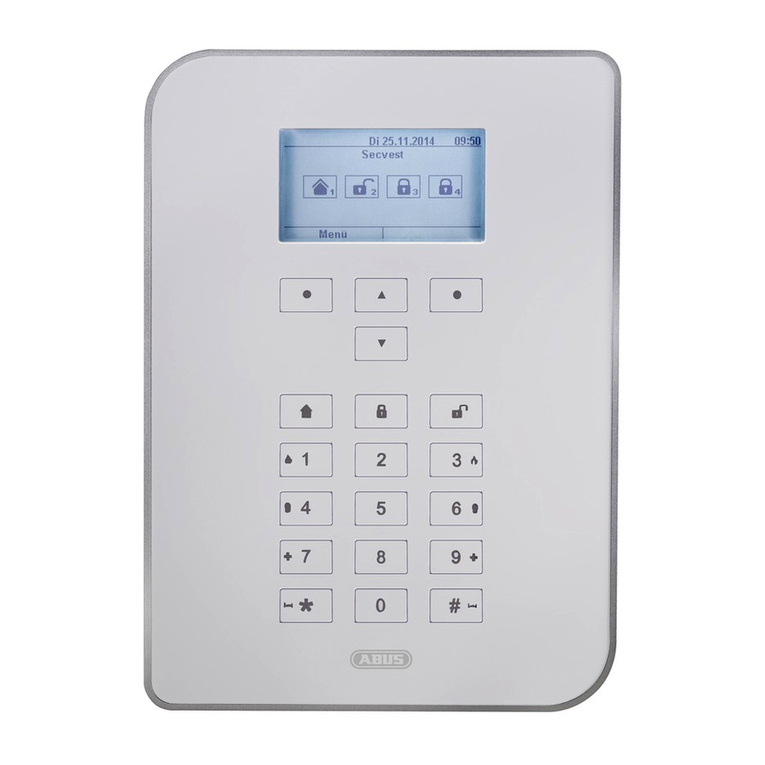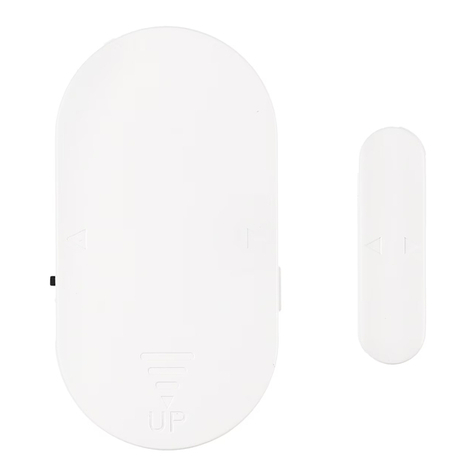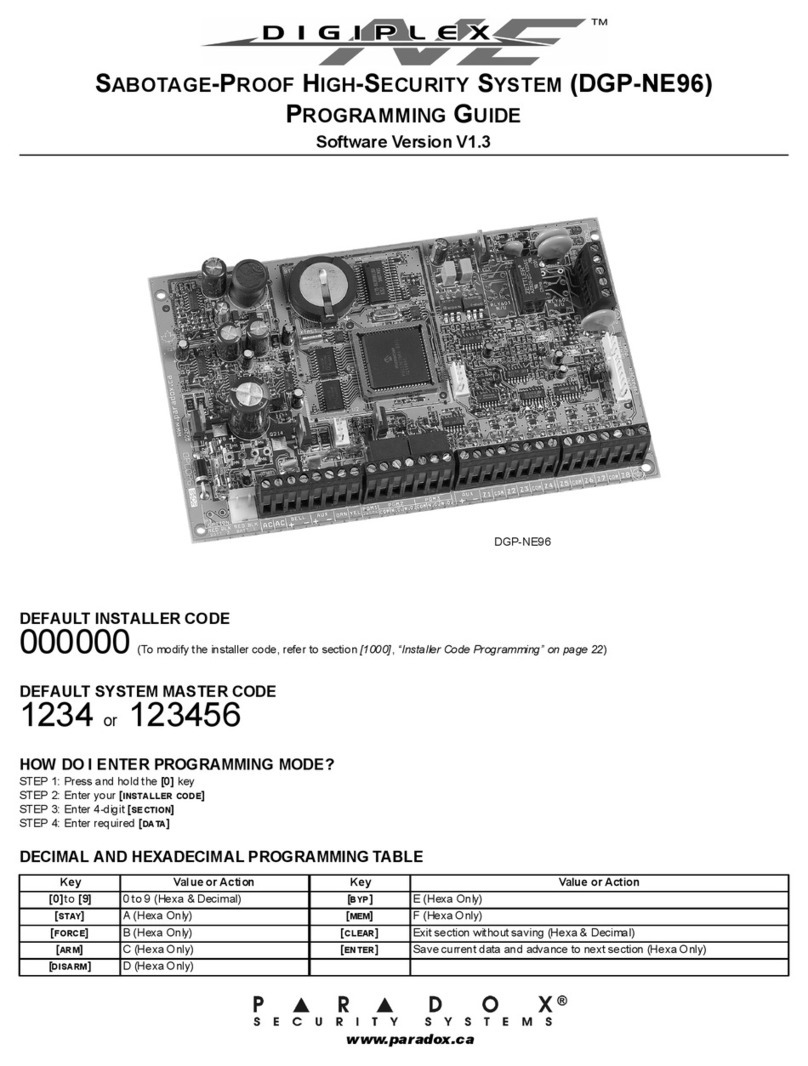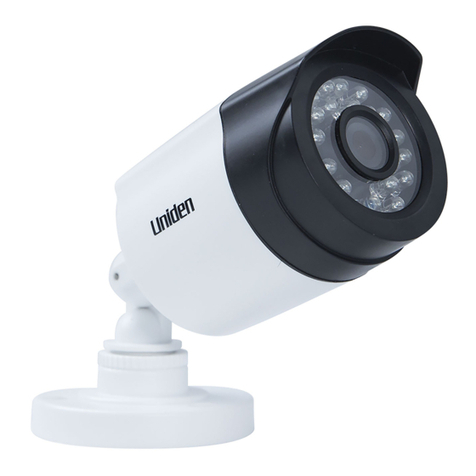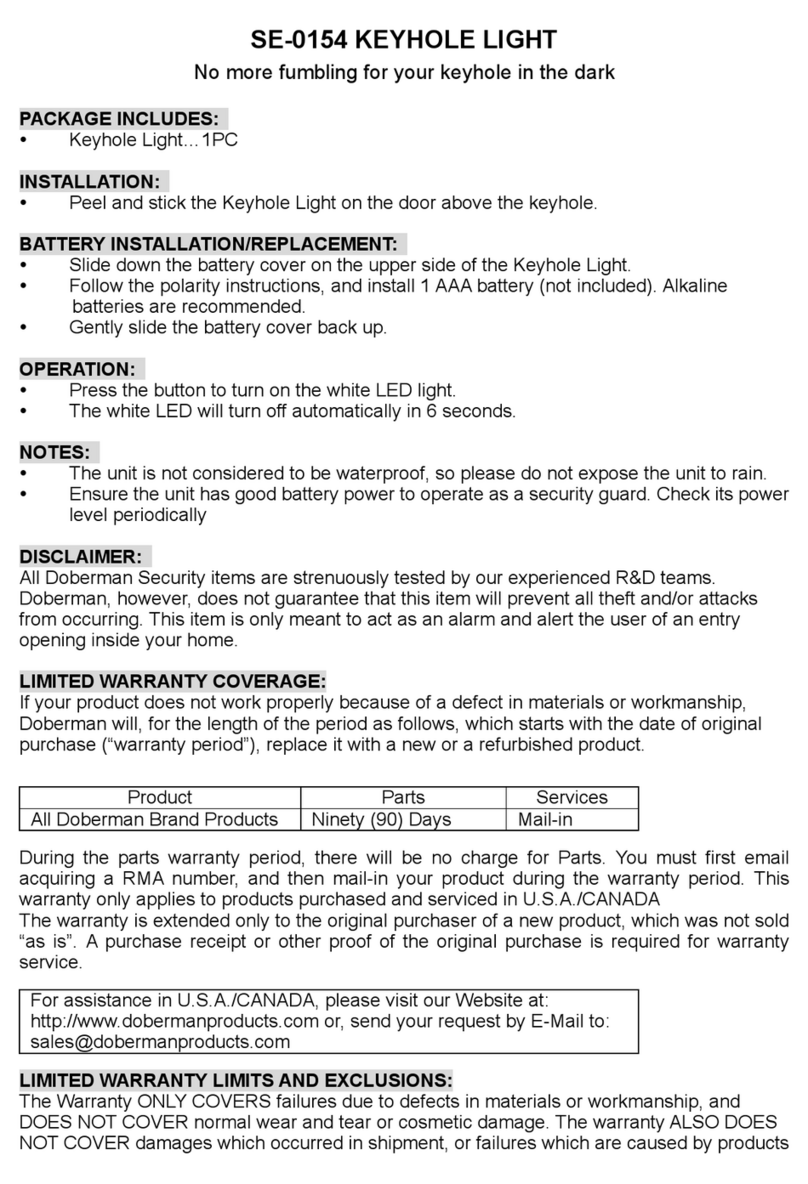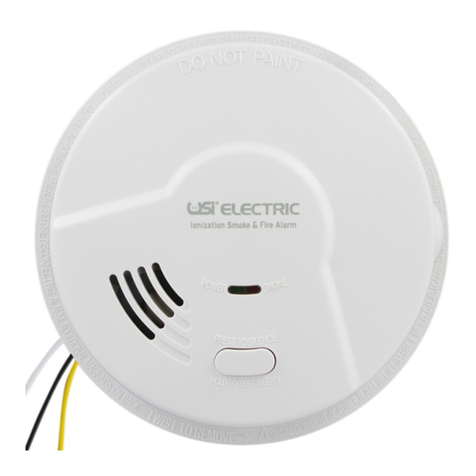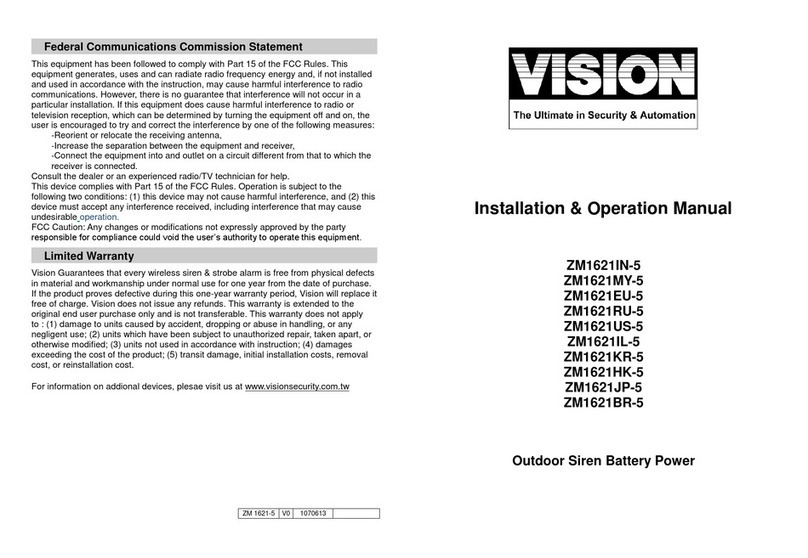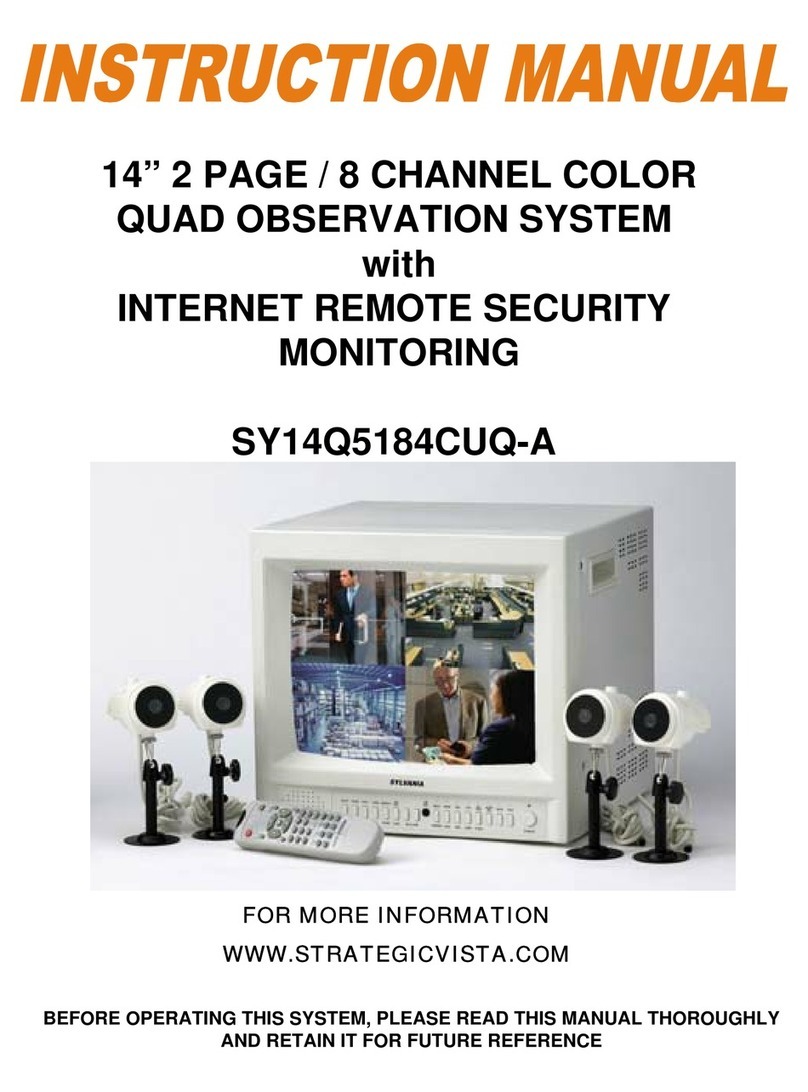Seres OL OPAL Manual

This document is theproperty of Seres OL and cannot be reproduced without authorization
1 Stream

OPAL :
OPERATION & MAINTENANCE BOOK
Page : 1/90
Manual N°: 10796
This document is theproperty of Seres OL and cannot be reproduced without authorization
1 UPDATE AND APPROVAL SHEET
Rev
Raison for updating
Issued by:
Approved by:
Date
A
Creation of the document
R&D SERES
Environnement
Quality Department
20/07/12
B
Way and Zero modifications
R&D SERES
Environnement
Quality Department
03/04/13
C
JBUS add
R&D SERES
Environnement
Quality Department
11/04/13
D
self-priming pump
R&D SERES
Environnement
Quality Department
03/10/13
E
Alarm Blocking fault add (10*)
R&D SERES
Environnement
Quality Department
02/12/13
F
Update spares part
DALIA R&D
SERES
Environnement
GOZZI Quality
Department
29/11/16
G
Update SERES OL + ISO certificate
DALIA R&D
SERES OL
DALIA QHSE
SERES OL
19/02/20
H
Update List spares part
DALIA R&D
SERES OL
Quality Department
31/07/20
I
Update ISO, contact and Hydrocyclone
removed
DALIA R&D
SERES OL
Quality Department
23/10/20
J
Update document
DALIA R&D
SERES OL
Quality Department
12/11/20
K
Update ISO
LENOBLE
SERES OL
Quality Department
10/03/21
L
Drawing 1103NOT02-BASE updated
BOUTRELLE
SERES OL
Industrialization
26/03/21
M
Update CE/UKCA Declaration
LENOBLE
SERES OL
Quality Department
19/08/21
N
Update spares part list
LENOBLE
SERES OL
Quality Department
13/10/21
O
Update document
LENOBLE
SERES OL
Quality Department
19/01/22
P
Addition of back-flush and temperature
without cooler
LENOBLE
SERES OL
Quality Department
28/03/22

OPAL :
OPERATION & MAINTENANCE BOOK
Page : 2/90
Manual N°: 10796
This document is theproperty of Seres OL and cannot be reproduced without authorization
2 Summary
1UPDATE AND APPROVAL SHEET _______________________________________________________________ 1
2SUMMARY ____________________________________________________________________________________ 2
3WARRANTY CONDITIONS _____________________________________________________________________ 4
3.1 REMINDER OF THE MAIN WARRANTIES CONDITIONS APPLICABLE TO THE DETECTOR __________________________ 4
3.2 SECURITY INSTRUCTIONS_______________________________________________________________________ 4
3.2.1 Safety Regulations _________________________________________________________________________ 4
3.2.2 Detector’s characteristics ___________________________________________________________________ 4
3.2.3 Environmental conditions ___________________________________________________________________ 5
3.3. INTERNATIONAL SYMBOLS RECOGNIZED BY SERES OL __________________________________________________ 5
3.4. AFTER SALE SERVICE CONTACT ___________________________________________________________________ 5
3.5. INFORMATION ON THE COMPANY __________________________________________________________________ 6
3.6. THE BOOK ____________________________________________________________________________________ 6
3.7. ACCESS CODES ________________________________________________________________________________ 6
3.7.1. Description ______________________________________________________________________________ 6
3.7.2. Your access codes_________________________________________________________________________ 7
4UNPACKING BOOK ____________________________________________________________________________ 8
4.1 PRECAUTION ________________________________________________________________________________ 8
5MEASURING METHOD________________________________________________________________________ 10
5.1 OPERATING PRINCIPLE ________________________________________________________________________ 10
5.2 APPLICATION _______________________________________________________________________________ 11
5.3 MEASUREMENT CYCLE________________________________________________________________________ 11
5.4 FEATURES OF THE MEASURING METHOD___________________________________________________________ 11
6TECHNICAL SPECIFICATIONS ________________________________________________________________ 12
6.1 THE ENVIRONMENT __________________________________________________________________________ 12
6.2 FEATURES _________________________________________________________________________________ 12
6.2.1 Standard dimensions ______________________________________________________________________ 12
6.2.2 Electric features__________________________________________________________________________ 12
6.2.3 Sample input_____________________________________________________________________________ 12
6.2.4 Sample output sortie_______________________________________________________________________ 12
6.2.5 Electrical connections _____________________________________________________________________ 12
6.2.6 Recordings ______________________________________________________________________________ 12
6.2.7 Cleaning of the vessel _____________________________________________________________________ 12
7PRESENTATION OF THE EQUIPMENT _________________________________________________________ 13
7.1 DESCRIPTION OF THE DETECTOR ________________________________________________________________ 13
7.2 DESCRIPTION OF SUBSETS _____________________________________________________________________ 15
7.2.1 The Vessel_______________________________________________________________________________ 15
7.2.2 Touchscreen _____________________________________________________________________________ 16
7.2.3 Measuring board _________________________________________________________________________ 17
7.2.4 The Engine/TM 61 pump group (Calpeda) _____________________________________________________ 22
7.2.5 The flowmeter____________________________________________________________________________ 26
8INSTALLATION MANUAL _____________________________________________________________________ 29
8.1 LOCATION _________________________________________________________________________________ 29
8.2 INSTALLATION DRAWINGS (DIMENSIONAL DRAWINGS,PRINCIPLE DIAGRAMS) _____________________________ 30
8.3 FIXATION __________________________________________________________________________________ 41
8.4 ELECTRICAL CONNECTIONS ____________________________________________________________________ 41
8.4.1 Wiring Diagram __________________________________________________________________________ 42

OPAL :
OPERATION & MAINTENANCE BOOK
Page : 3/90
Manual N°: 10796
This document is theproperty of Seres OL and cannot be reproduced without authorization
8.4.2 Communication __________________________________________________________________________ 43
8.5 HYDRAULIC CONNECTIONS ____________________________________________________________________ 44
8.5.1 Sample to analyse_________________________________________________________________________ 44
8.5.2 Clean water for the zero measurement ________________________________________________________ 44
8.5.3 Compressed air (Option) ___________________________________________________________________ 44
8.5.4 Cooling water (option)_____________________________________________________________________ 44
9THE OPERATION MANUAL ___________________________________________________________________ 46
9.1 PRE-START_________________________________________________________________________________ 46
9.2 COMMISSIONING ____________________________________________________________________________ 46
9.3 LIST OF MENUS______________________________________________________________________________ 48
9.3.1 User settings_____________________________________________________________________________ 50
9.3.2 Back-ups________________________________________________________________________________ 57
9.3.3 Recordings ______________________________________________________________________________ 60
9.3.4 Information______________________________________________________________________________ 61
9.4 ALARMS___________________________________________________________________________________ 62
9.4.1 Viewing the alarms________________________________________________________________________ 62
9.4.2 Exceeded threshold alarm __________________________________________________________________ 63
9.4.3 General failure (or detector fault)____________________________________________________________ 63
9.4.4 Management of a blocking failure____________________________________________________________ 66
9.4.5 Management of Y-filter back-flush (if selected)__________________________________________________ 66
10 THE MAINTENANCE MANUAL ________________________________________________________________ 69
10.1 CONTROLS_________________________________________________________________________________ 69
10.1.1 Zero setting ___________________________________________________________________________ 70
10.1.2 Optical test –Control of Operation ________________________________________________________ 73
10.1.3 Equipment testing ______________________________________________________________________ 74
10.1.4 Range summary ________________________________________________________________________ 77
10.1.5 Software update ________________________________________________________________________ 77
10.2 DISASSEMBLING THE ELEMENTS_________________________________________________________________ 79
10.2.1 Touchscreen___________________________________________________________________________ 79
10.2.2 The measuring board (or main board) ______________________________________________________ 79
10.2.3 The measuring vessel____________________________________________________________________ 81
11 THE TROUBLESHOOTING MANUAL___________________________________________________________ 85
11.1 TROUBLESHOOTING __________________________________________________________________________ 85
12 SPARE PARTS ________________________________________________________________________________ 87
13 ANNEXES ____________________________________________________________________________________ 88

OPAL :
OPERATION & MAINTENANCE BOOK
Page : 4/90
Manual N°: 10796
This document is theproperty of Seres OL and cannot be reproduced without authorization
3 Warranty conditions
3.1 Reminder of the main warranties conditions applicable to the detector
Our general terms of warranty are applied to this detector and integrated in our general terms of sale.
Normal operation conditions. Only follow-up of the rules supplied by Seres OL guarantees the analyzer’s
good operation. In case of non observance of the rules of directive formulation by user, Seres OL reserves
the right to refuse the one-year manufacturer warranty for the supplied apparatus.
3.2 Security instructions
3.2.1 Safety Regulations
To avoid injury to persons caused by electricity, please respect all the safety regulations of this book.
The equipment should to be used exclusively with a ground plug.
If the equipment is used in a way not specified by the manufacturer, the protection provided with the
equipment can be affected.
Any spare part has to be replaced exclusively by a qualified person using only the parts specified by
the manufacturer. It is always recommended that all power supplies are switched off before
dismounting or replacement of any component.
For any intervention on the hydraulic part of the detector, wear adapted protections (protective
clothing, gloves, glasses).
Please, do not use this equipment if there is flammable liquids or vapours, this could represent a risk for
security.
3.2.2 Detector’s characteristics
110 or 240V AC (On request)
50 or 60hz
All wirings have be in accordance with local standards and realised by a skilled and authorized
electricians.
All wirings and connections (electrical, hydraulic …) should be done according to local regulations of the
country in force and only by qualified authorized and skilled personal. The equipment warranty won’t be
guaranteed by the manufacturer in case of non observance of the standards and regulations reported in
points 8 and hereafter in this book.

OPAL :
OPERATION & MAINTENANCE BOOK
Page : 5/90
Manual N°: 10796
This document is theproperty of Seres OL and cannot bereproduced without authorization
3.2.3 Environmental conditions
Relative humidity
10% to 80%
Temperature
5 to 45 C
Pollution level
2
Installation category
II
Maximum altitude
2000m.
Please, do not use this equipment if there is flammable liquids or vapours, this could represent a risk for
security.
3.3. International symbols recognized by Seres OL
IEC 60417, No. 5016
Electrical fuse
IEC 60417, No. 5017
Ground
IEC 60417, No. 5021
Equipotentiality
IEC 60417, No. 5032
Alternative current
IEC 60417, No. 5041
Be careful, hot surface
ISO 3864, No. B.3.1
Be careful, see documents
ISO 3864, No. B.3.6
Be careful, electric shock risks
3.4. After Sale Service Contact
After Sale Service / Spare parts : Tel : 04.42.97.37.91, psav@seres-ol.com
NB: To avoid errors, when ordering spare parts or service attendance please specify the serial number of
the analyser if possible.

OPAL :
OPERATION & MAINTENANCE BOOK
Page : 6/90
Manual N°: 10796
This document is theproperty of Seres OL and cannot bereproduced without authorization
3.5. Information on the company
SERES OL
219 Avenue de Provence
13730 SAINT VICTORET
FRANCE
Tel: +33 (0)4 42.97.37.37
Web: www.seres-ol.com
SIRET : 85323753500028
NAF 2651B
TVA Intracommunautaire FR84853237535
3.6. The book
The information contained in this book may be subject of any changes without notice beforehand and don’t represent
any engagement on behalf of Seres OL. Seres OL reserves the right to make changes in the construction, design,
specifications, and / or in the procedures that cannot be reflected in the book.
This book is supplied under the condition that the provided information will not be used to the detriment of Seres OL.
3.7. Access codes
3.7.1. Description
Some menus have a limited access. There are two access levels:
User access. Possible Actions: Consulting the main window data.
User with authorization access (or User W). Possible Actions: Consulting the measure in process, Stop of
the measure in process, access to the settings menu (Zero, Setting 4-20mA output ...).
Once the access code is entered, if there is no action within 5 minutes, the code will be asked again automatically. If
the code is unknown, press Cancel and the main page will appear automatically.

OPAL :
OPERATION & MAINTENANCE BOOK
Page : 7/90
Manual N°: 10796
This document is theproperty of Seres OL and cannot bereproduced without authorization
3.7.2. Your access codes
Some menus have a limited access. There are two access levels:
User access
oPossible actions: Consulting the main window datas.
User access with authorization (or User W).
oPossible Actions: Consulting the measure in process, Stop of the measure in process, access to the
settings menu (Zero, Setting 4-20mA output ...).
oUser with authorization access CODE: 0712
Once the access code is entered, if there is no action within 5 minutes, the code will be asked again automatically. If
the code is unknown, press Cancel and the main page will appear automatically.
THE PAGE IS TO BE CUT AND KEPT IMPERATIVELY

OPAL :
OPERATION & MAINTENANCE BOOK
Page : 8/90
Manual N°: 10796
This document is theproperty of Seres OL and cannot bereproduced without authorization
4 Unpacking book
4.1 Precaution
Position the box corectly (Up/Down)
Unpack carefully the detector
Check the analyzer for damage
oIf the device seems to be damaged, don’t plug it and get into touch with the After Sale Service
Department immediately (contact in Chapter Warranty).
Attach the rubber mounts for the pump that are in the plastic bag hanging on it

OPAL :
OPERATION & MAINTENANCE BOOK
Page : 9/90
Manual N°: 10796
This document is theproperty of Seres OL and cannot bereproduced without authorization
SECTION 1
EQUIPMENT RECORDS
5. MEASURING METHOD
6. TECHNICAL SPECIFICATIONS
7. PRESENTATION OF THE EQUIPMENT

OPAL :
OPERATION & MAINTENANCE BOOK
Page : 10/90
Manual N°: 10796
This document is theproperty of Seres OL and cannot bereproduced without authorization
5 Measuring method
5.1 Operating principle
The water that undergoes analysis flows through a measurement vessel made out of a glass cylinder.
On either side of the vessel there are:
•an infrared transmitter.
•a trimming cell that corrects possible deviations.
• a measuring cell that measures absorption and serves as a reference (180°).
•a measuring cell that receives, by reflection on hydrocarbon particles, a portion of the energy emitted by the
infrared transmitter (150°).
•A measuring cell that receives, by reflection on iron oxide-type particles, a portion of the energy emitted by
the infrared transmitter (90°).
The quantity of energy thus emitted is proportional to the number of particles and is converted into hydrocarbon
ppm. An alarm with an adjustable threshold warns the user if concentration levels are exceeded.
To prevent deposits from forming on the inside of the measuring vessel, a scraper controlled by an electrical actuator
regularly cleans the inside of the vessel.
Figure 1 : Layout of the various elements used in the measuring vessel.

OPAL :
OPERATION & MAINTENANCE BOOK
Page : 11/90
Manual N°: 10796
This document is theproperty of Seres OL and cannot bereproduced without authorization
5.2 Application
OPAL is a new generation detector: online, live feed, measurement of IR light scattering, reaction agent-free, for the
control of hydrocarbon particles suspended in water.
All types of water:
• condensate return water, heat exchangers
• industrial water,
• industrial and urban waste water
Range of domains:
• Onshore: refineries, oil drilling, petrochemical, energy and other industries,
• Offshore: oil rigs, ships,
5.3 Measurement cycle
Measurements are taken continuously. The maximum recommended working temperature is 40°C.
5.4 Features of the measuring method
Characteristic values stemming from the method are given as an end-of-scale percentage.
Wavelength
850nm
Measurement range
0 –10 –30 –50 –120 –250 –500
ppm
Repeatability
±2-3% FS
Accuracy
±2-3% FS
Interfering factors
Turbidity (contact Seres)
Bubbles

OPAL :
OPERATION & MAINTENANCE BOOK
Page : 12/90
Manual N°: 10796
This document is theproperty of Seres OL and cannot bereproduced without authorization
6 Technical specifications
6.1 The environment
Installation instructions:
Ambient temperature should be between 5°C and 45°C, maximum
6.2 Features
6.2.1 Standard dimensions
Chassis: l*h*d: 1055*800*250 mm
Volume: 0.21m3
Weight: chassis 30kg (45kg with the cooling unit)
Protection: IP65
If additional options are present, refer to the dimensional drawing.
6.2.2 Electric features
Power consumption: Typical: 150 VA - Maximum 700 VA (with pump)
Input supply: 110 or 240 V, 50 ou 60 Hz
6.2.3 Sample input
Flow: The normal flow is of 200l/h (sample or zero water). The minimum tolerated flow rate is 100l/h knowing that
we recommend 200l/h. Below 60l/h there will be an alarm to protect the pump.
Pressure: 3 bars maximum
Temperature: min: 5°C max: 50°C
6.2.4 Sample output sortie
Unobstructed exit, open.
6.2.5 Electrical connections
Input/output signals:
Standard output signals: 4-20 mA (0mA if alarms) or 0-20mA and floating contacts
Input signals:
oStandby/Option/Accidental Leak
6.2.6 Recordings
Via USB port.
6.2.7 Cleaning of the vessel
Automatic and programmable.

OPAL :
OPERATION & MAINTENANCE BOOK
Page : 13/90
Manual N°: 10796
This document is theproperty of Seres OL and cannot bereproduced without authorization
7 Presentation of the equipment
7.1 Description of the detector
In order to simplify the installation process, the entire equipment is placed on a metal frame (D) (see photo and
dimensional drawing below), on which the following items are assembled:
the detector (A), which includes a plastic box that holds the electronic components and the electrical
connection strips, with the measuring vessel mounted on the right side of the box,
a pump (C) ensuring the emulsion and distribution of the sample that undergoes analysis.
a flowmeter (B) that measures the flow of the sample,
a flow setting valve (G) for the clean water/sample,
a 3-way valve (E) for the distribution of clean water/sample
a filter sieve (F),
Optionally, the device may also include:
a cooling unit (I) with cold water circulation maintaining the sample at a temperature of less than 50°C
before it enters the pump,
a hot water safety feature (temperature sensor and solenoid valve (SV)) that cuts off the pump if the sample
temperature rises too much (in excess of 50°C),
a back-flush of the Y filter.
Figure 2: OPAL on assembly (without options).

OPAL :
OPERATION & MAINTENANCE BOOK
Page : 14/90
Manual N°: 10796
This document is theproperty of Seres OL and cannot bereproduced without authorization
Figure 3: General Dimensional Drawing (with options).
A
B
C
D
E
F
I
G

OPAL :
OPERATION & MAINTENANCE BOOK
Page : 15/90
Manual N°: 10796
This document is theproperty of Seres OL and cannot bereproduced without authorization
7.2 Description of subsets
7.2.1 The Vessel
The vessel is made of DELRIN and of PVC. It includes 3 parts:
The top unit: contains the sample output and the electrical actuator.
The core unit: contains the transmitter, the four sensors and the transmitter, as well as the desiccant capsule. It
also serves as a support of the vessel on the box.
The bottom unit: contains the sample input.
Figure 4: Installed measuring vessel.
Figure 5: See-through display of the measuring vessel.

OPAL :
OPERATION & MAINTENANCE BOOK
Page : 16/90
Manual N°: 10796
This document is theproperty of Seres OL and cannot bereproduced without authorization
7.2.2 Touchscreen
The "screen" or "display" board serves as a user interface.
It displays the measurement, the alarms, and allows access to certain settings.
7.2.2.1 Aspect and dimensions
The screen is mounted on the box's door.
Figure 6: Front view of the OPAL box door. Figure 7: Rear view of the door.
7.2.2.2 Power supply
The screen is powered by OPAL measuring board via the grey ribbon cable. The supply voltage is of 3.3V.
The ribbon cable is coded, and the USB-end of the cable provides the coding.
Figure 8: Details of the display board's connections.
Ribbon cable for power
supply and
communications
Keyboard ribbon cable
(option)

OPAL :
OPERATION & MAINTENANCE BOOK
Page : 17/90
Manual N°: 10796
This document is theproperty of Seres OL and cannot bereproduced without authorization
7.2.3 Measuring board
The electronic board includes the Measurement function and the Input/output management function.
It also controls the emulsion pump.
7.2.3.1 Power supply
This board is directly connected to the mains. The Start/Stop switch on the board is used to start the device.
It is fitted with 2 time-delay 5A fuses (5x20mm). The AC/DC-type power supply allows the conversion into
24VDC.
Features:
Input voltage range
85V AC to 264V AC
Frequency
50/60hz
Output voltage
24 V / 1.25A / 30W
Overload protection
105%.
Over voltage protection
120% of output nominal voltage
Resistance to over voltage
I/P-O/P: 3KVAC, 1minute
7.2.3.2 Functions
It performs an optical measurement using the synchronous rectification method.
Figure 9: Measuring board - seen from above.
Informational description of the sensors and actuators of the measuring board.
Electrical outlet
(230/110 –50/60Hz)
5A fuses
ON/OFF switch

OPAL :
OPERATION & MAINTENANCE BOOK
Page : 18/90
Manual N°: 10796
This document is theproperty of Seres OL and cannot bereproduced without authorization
The configuration and use of the different elements depend on the measuring method.
Measurement:
1 projector
4 optical receptors (Hydrocarbon, Absorption, Compensation... measurements)
1 pump control
1 electric actuator control
1 temperature measuring unit (PT100)
1 Flow measuring unit
2 busbars I2C (Option)
1 USB port for measurement retrieval
Inputs/outputs:
1 4-20 mA-type analogue output. This output is identified with the term 4/20mA.
11 TOR outputs, identified with the terms RELAYS and OUTPUTS VOLTAGE, and distributed in
the following manner:
o7 relay outputs (floating contacts 24V at 1A max) for information about the measurement's
status (alarms, thresholds…).
o4 TOR 24V 500mA outputs for direct cabling of a solenoid valve, a buzzer...
3 TOR inputs identified with the term INPUTS.
1 RS232 output.
1 optional communication output (RS232-RS485).
The input and outputs may be configured for ATEX mode (ATmosphères EXplosibles - explosive atmospheres).

OPAL :
OPERATION & MAINTENANCE BOOK
Page : 19/90
Manual N°: 10796
This document is theproperty of Seres OL and cannot bereproduced without authorization
7.2.3.3 Functions of outputs and inputs
7.2.3.3.1 Functions of outputs
(1) possible configurations: 4-20mA, 0-20mA, (2) TOR floating contact output. Type NO or NF, (3) Solenoid valve power output.
C.S. = Floating contact (can be configured as NO /NF)
N.U. = Not used
Direction
Type
Qty per
board
board
(Address: 1 –N=0)
Name
Function
Output
Analogue
1
4-20mA (1) (1)
4/20mA Measurement
Digital (all or nothing) (0-24V)
Relay
RELAY 1(2)
C.S. Reserved threshold 1
Relay
RELAY 2(2)
C.S. Reserved threshold 2
Relay
RELAY 3(2)
2 possibilities depending of
the configuration:
a) C.S. Reserved hot water
SV status
b) 24VDC Hot water SV
command
Relay
RELAY 4(2)
C.S. Reserved valid
measurement
Relay
RELAY 5(2)
C.S. Reserved general alarm
Relay
RELAY 6(2)
C.S. Option
Relay
RELAY 7(2)
C.S. Flow Fail
Voltage
OUTPUT
VOLTAGE 1(3)
C.S. Reserved hot water SV
command
Voltage
OUTPUT
VOLTAGE 2(3)
C.S. Reserved way SV
command
Voltage
OUTPUT
VOLTAGE 3(3)
C.S. Reserved zero water
SV command
Voltage
OUTPUT
VOLTAGE 4(3)
C.S. Reserved buzzer
command
Table of contents
Popular Security System manuals by other brands
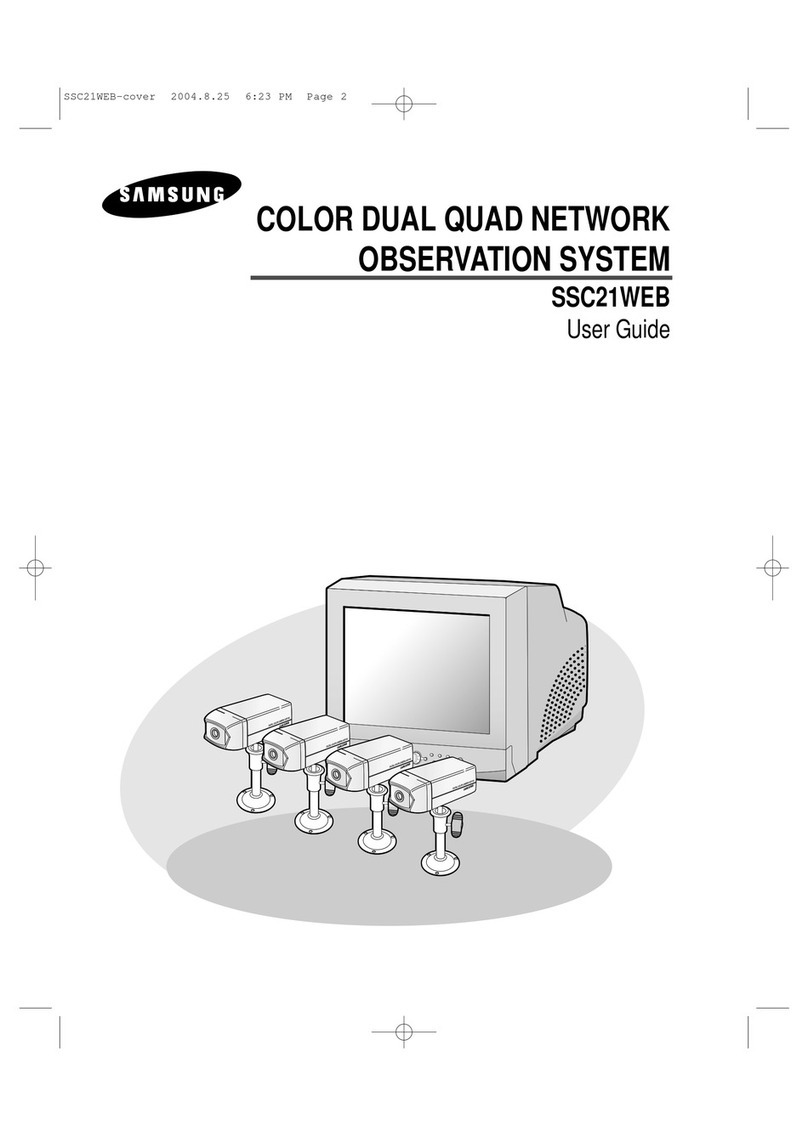
Samsung
Samsung SSC-21WEB user guide
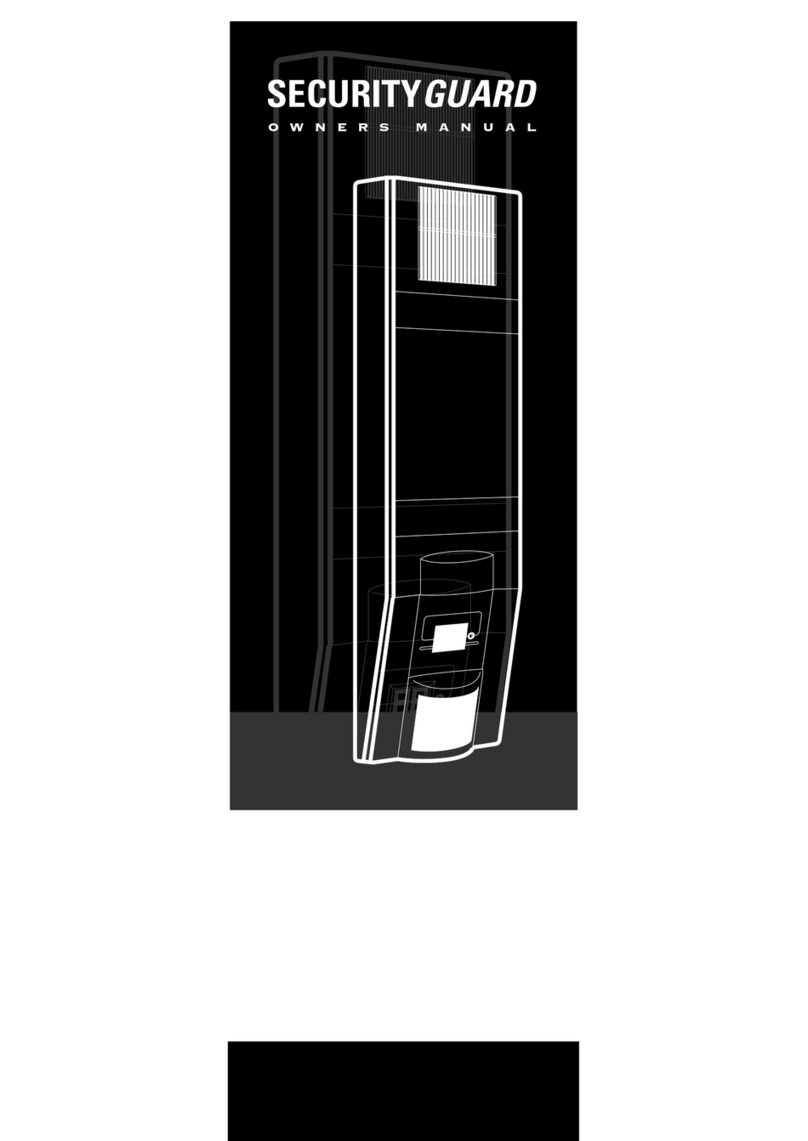
Ness Security Products
Ness Security Products SecurityGuardII owner's manual
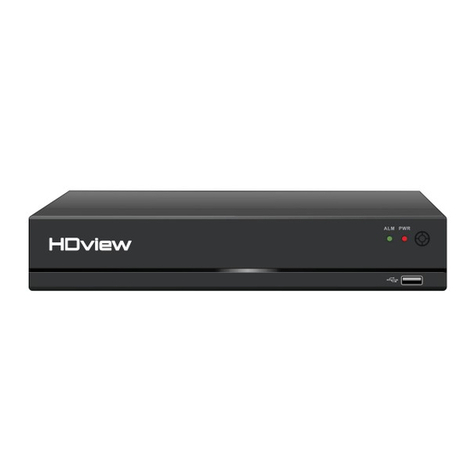
ESP
ESP HDview Remote Viewing Guide
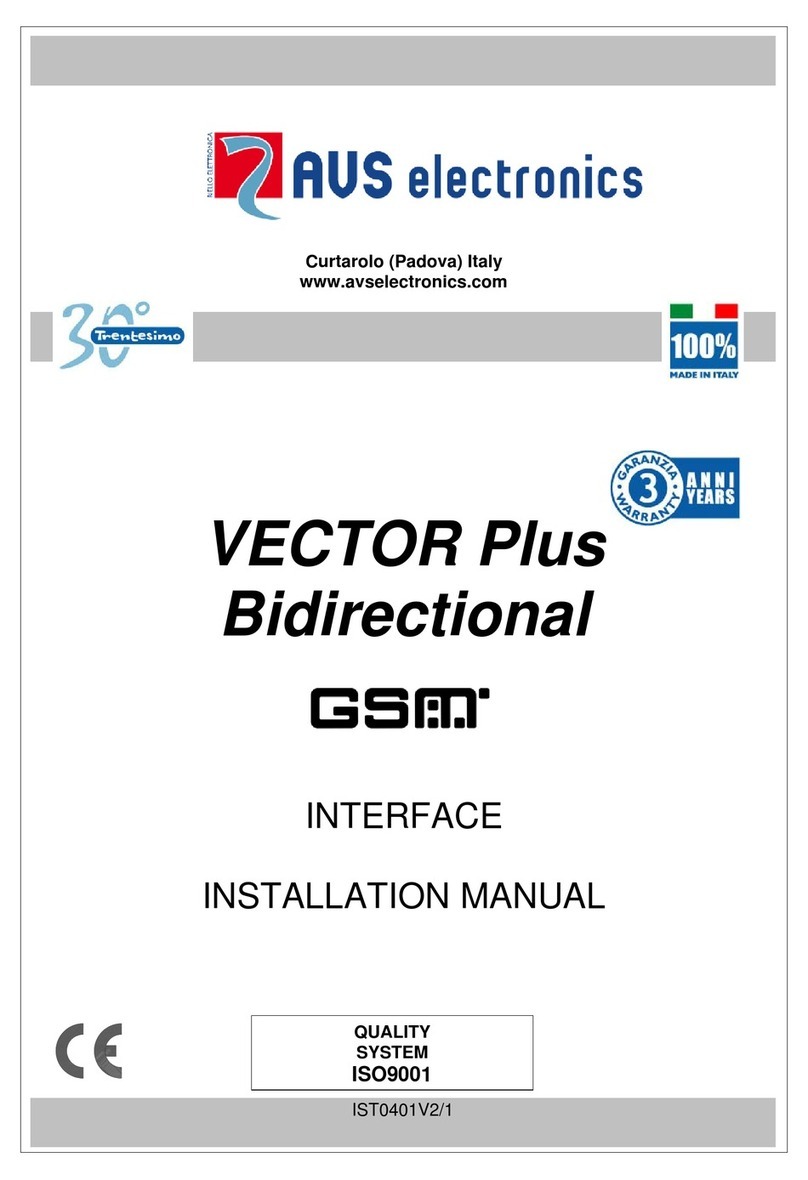
AVS Electronics
AVS Electronics VECTOR Plus installation manual

KALEAS
KALEAS KlimaDetector operating instructions
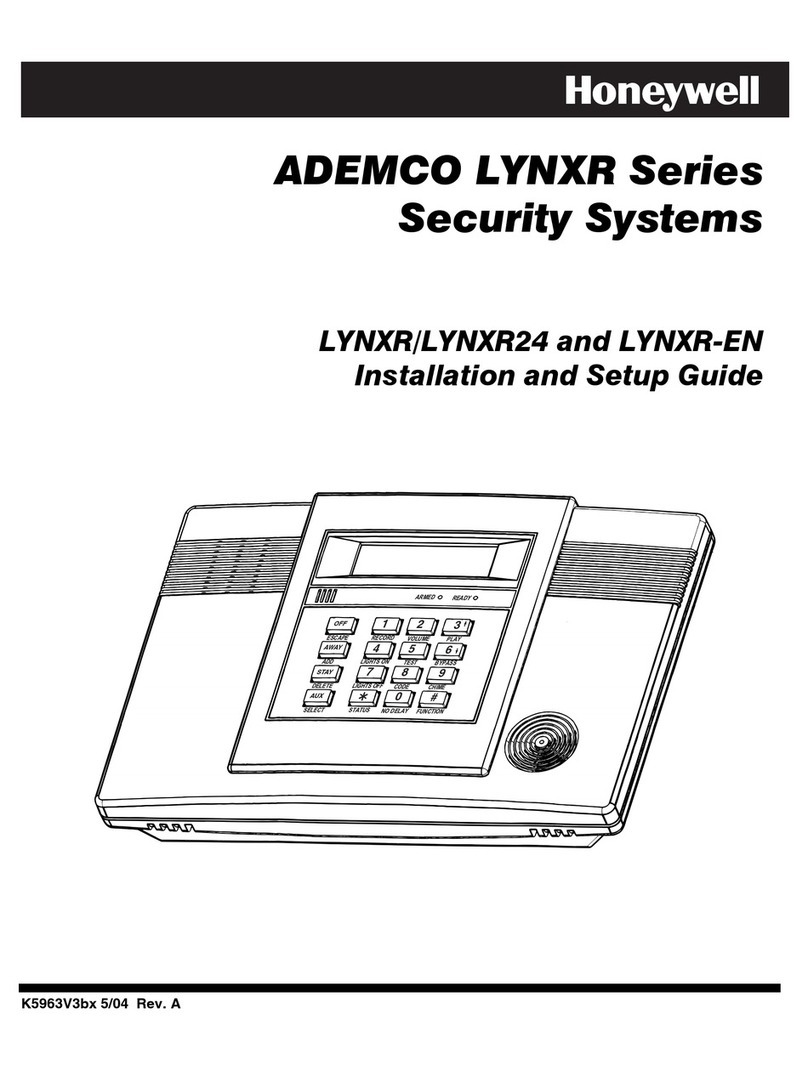
Honeywell
Honeywell ADEMCO LYNXR Series Installation and setup guide
